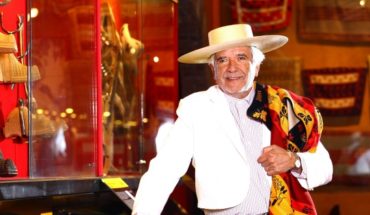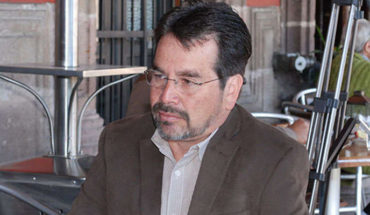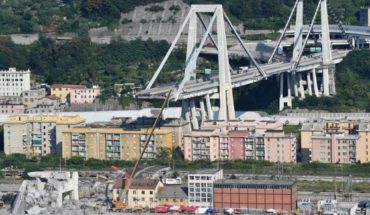judging from the hype in Havana, capitalism is flourishing in the new Cuba. In the fair shopping international of Havana this week, delegations from some 60 Nations gathered to show off the wonders of the country. From cigars and rum from designer to Canadian chemicals. Not to mention the necessary nudges in the persistent blocking economic of the United States, which has curbed the enthusiasm of potential investors of “El Norte”.
However, look beyond the fairground and the Billboard is not so encouraging. Even if expanded, the emerging private sector in Cuba fight against bureaucracy, monetary incontinence, official ambivalence about economic reforms and the ideological barricades that were left from the cold war. Innovation and the company much needed Island to boost economic recovery and rescue the Revolution itself remain weak.
It is true that private companies are leading a revival of travel, leisure and entertainment, and they have created half a million jobs in the past five years, according to Pavel Vidal, a Cuban economist who teaches at the Pontifical Javeriana University in Cali, Colombia.
However, that is only half of the eliminated jobs for the reduction of inflated and dazzling State-owned companies since 2009. Much more pain is in store as Cuba struggles with falling export revenues and the State giants who thrive in “Socialist pesos” extremely overvalued.
President Miguel Diaz-Canel, the first revolutionary leader that Cuba has known and is not a Castro, received the task of promoting reforms enshrined in a new Constitution. And, however, the first 100 days of Diaz-Canel have been disappointing.
Two Vice-Presidents and six Ministers from the days of Raúl Castro were dismissed, but three of his Vice-Presidents and 16 remnants of the former regime kept their seats. And don’t confuse the combination of cabinets with the renovation: Although powerful Jose Ramon Machado Ventura, a Stalinist veteran, retired from his Vice President, remains in charge of the “policies of the pictures”, a band from which controls who is in and who is in the bureaucracy.
As you might expect, the lack of transparency in Government is also in discussion. Start with the official assertion that the economy grew a 1.1 per cent in the first half of 2018, while the production of the export of the island, sugar, has dropped 40 percent with respect to 2016-2017 harvest and tourist arrivals are d esacelerando, writes Vidal in the most recent report of the standard economic trend of Cuba. Enter the public deficit: although it has declined slightly, yet last year reached an alarming 9 per cent of gross domestic product, and it is estimated that it will be worse this year.
The rate of investment in Cuba, from 10 to 15 percent of the gross domestic product, “is one of the lowest in Latin America and even cover the cost of depreciation of the capital”, said Vidal.
What aggravates the tribulations of Cuba is the collapse of Venezuela, which has staggered the trade and has deprived the economy of the island of cheap oil and credit. “Cuba already it has no room for manoeuvre to learn from the crisis and to adapt,” he said in an interview John Kavulich, President of the Council of trade and Economics United States-Cuba. “It is now in constant crisis.”
This is where more capitalism could help. Raúl Castro reforms eased some restrictions on foreign capital: foreign investors no longer need to present studies of environmental impact or demonstrate that their projects would not violate the national defense. The native company was not so blessed. “The Government has opened the economy mainly low value-added companies where job opportunities are limited,” said Vidal. “If he were still in Cuba, I would be working in a restaurant or driving a taxi.”
Even the modernising policies fall short. Consider move to curb tax evasion and off book deals by requiring companies to transfer their money through the banking system. However, this initiative collides with the fact that Cuba do not allow companies using electronic payments, enter or import supplies legally, ensuring a flourishing black market.
Then there is the absence of national wholesale markets requiring business owners to travel abroad to buy goods, services and parts. It is a convolution that costs a fortune to Cubans while it enriches to countries like Panama, Mexico and the United States.
Drive disconnection is a red book of official doubts about the reforms and the markets should be encouraged. Private enterprise has increased the wealth, the logic is, but also inequality, and that frustrates the revolutionary ideals and irritations of the excluded Cubans of earnings. “A direct line from the Government shows that the majority of people are annoying inequality and blame the reforms,” said Vidal. “In fact, inequality is a pretext for the members of the hard-liners in the Government who don’t like reform in the first place.”
Another obstacle: the commitment of Cuba preserve the blockade military in the most lucrative economic sectors. United States took into account that preference at the end of last year when it imposed sanctions on dozens of hotels, travel agencies, shops of consumption and consultancies controlled or the Cuban armed forces and intelligence service, and the Security Advisor National John Bolton has just announced some more. measure.
That is why the head of Havana is false to change and, at the same time, preserving the status quo. “Allow self-employed workers to travel gives the impression of freedom and freedom of movement, even if it makes no sense in terms of money,” says Kavulich. “The message is that we are willing to give up $ 250 million or more a year, so it will not have the optics of a revolutionary Government that will support the rehabilitation of the private sector.”
It is part of the price Cuba pays for maintaining an ideology beyond its expiration date.
Poured in this op-ed content is the sole responsibility of the author and do not necessarily reflect the editorial line nor the counter position.





